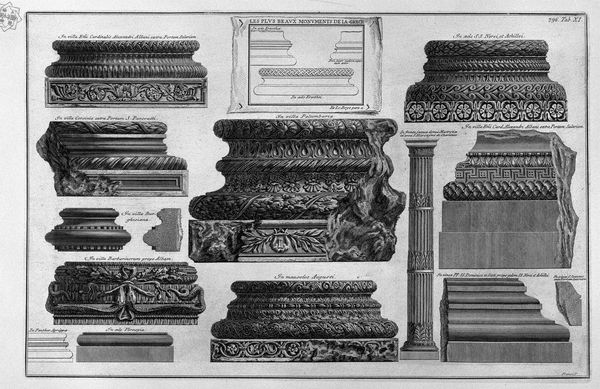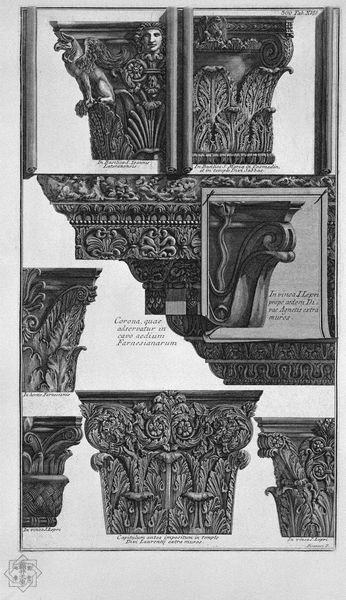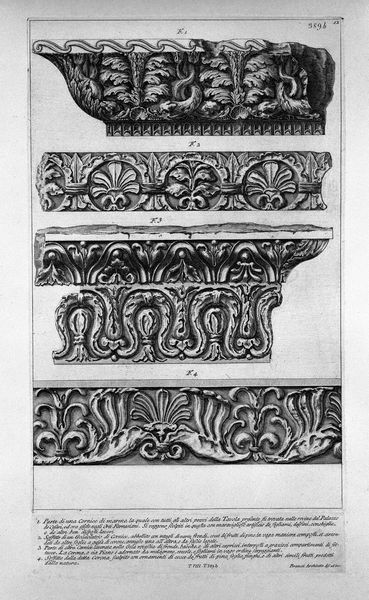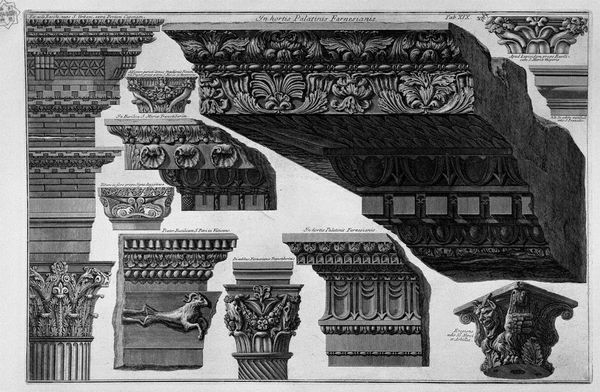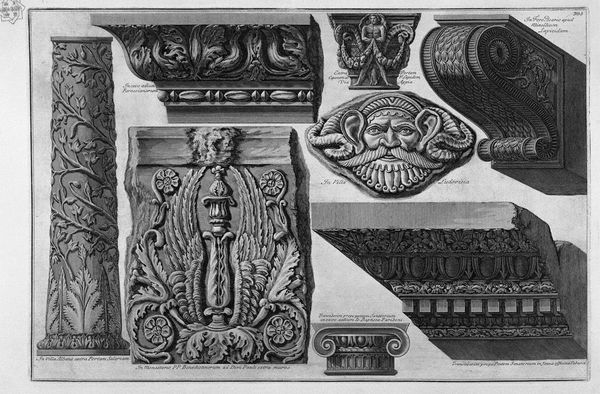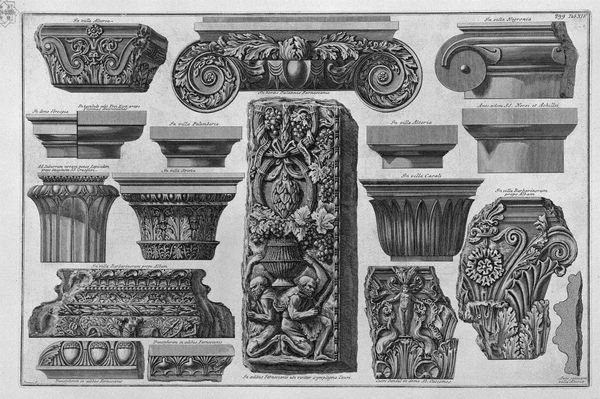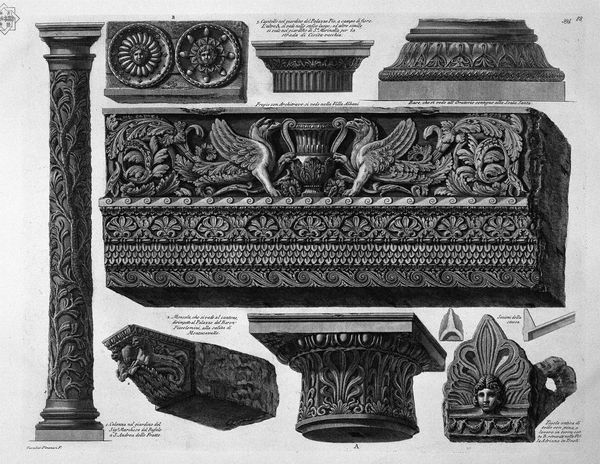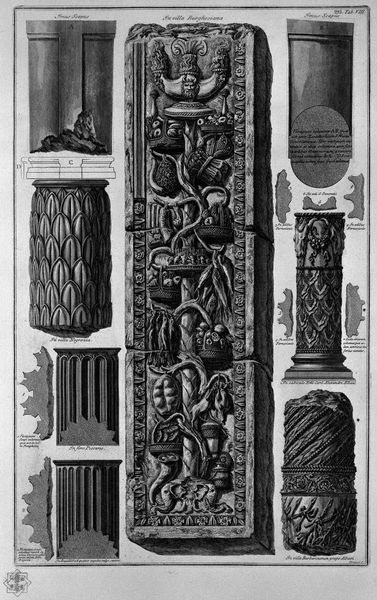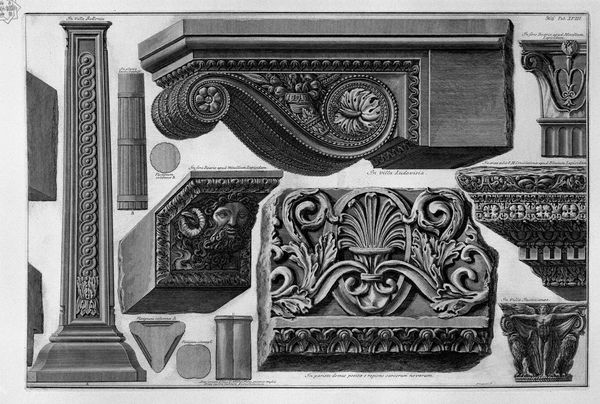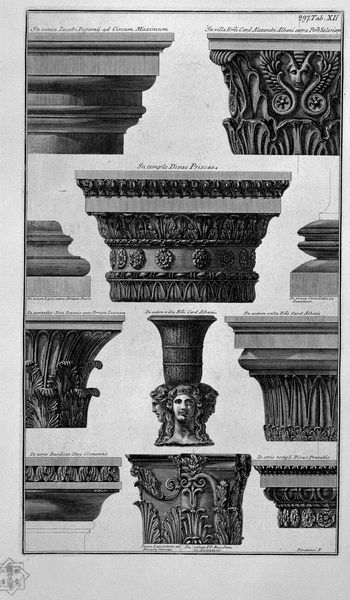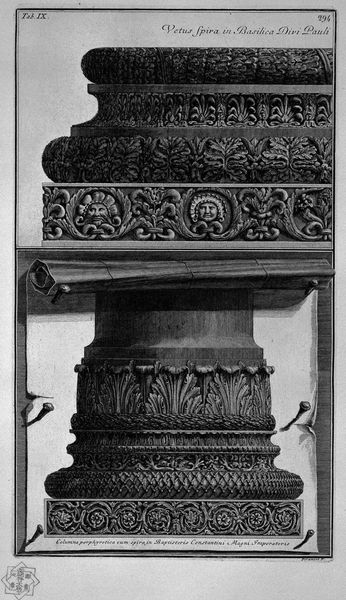
Column bases and capitals (S Prassede, St. Peter in Chains, Villa Albani, etc.)
0:00
0:00
drawing, print, etching, engraving, architecture
#
drawing
# print
#
etching
#
sculpture
#
greek-and-roman-art
#
classical-realism
#
form
#
geometric
#
framed image
#
column
#
arch
#
line
#
decorative-art
#
engraving
#
architecture
#
statue
Copyright: Public domain
Giovanni Battista Piranesi made this etching of column bases and capitals in the 18th century. He meticulously documented ancient Roman architectural details, transforming stone carvings into delicate lines on paper. Notice how the varying textures are rendered through precise hatching and cross-hatching. Piranesi masterfully translates the weight and volume of stone into an image, revealing the deep labor and skill involved in quarrying, carving, and constructing these architectural elements. The choice of etching, a printmaking process involving acid-etched lines on a metal plate, highlights the contrast between the permanence of stone and the relative ease of reproduction. Piranesi's detailed depictions served as both historical record and inspiration for neoclassical design, fueling a renewed interest in classical forms and influencing architectural styles for generations. This etching invites us to consider the relationship between manual labor, artistic representation, and the circulation of knowledge. It elevates architectural details to the level of fine art, blurring traditional distinctions between craft and art.
Comments
No comments
Be the first to comment and join the conversation on the ultimate creative platform.
